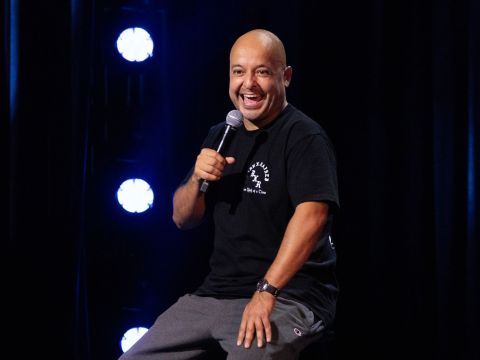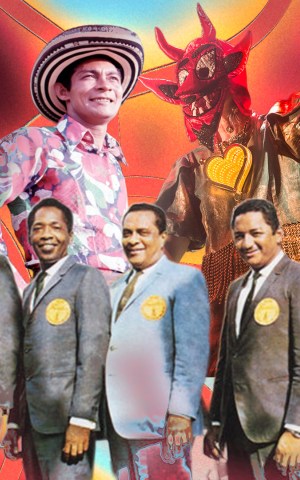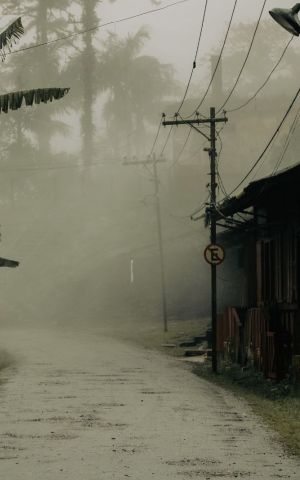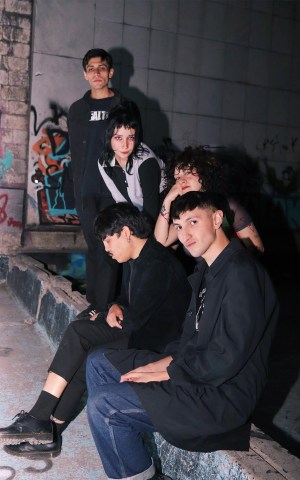The 2025 New Orleans Jazz & Heritage Festival continues expanding its cultural richness. During the festival’s first weekend (Apr. 24 to 27), the massive festival featured Mexican artists and culture through the second installment of their Expedia Cultural Exchange Pavilion. The festivities took place at the Fair Grounds Race Course in New Orleans, LA. To get an insight into Mexico’s takeover, Remezcla talked with Mexican singer-songwriter Lila Downs, EDM and cumbia DJ El Dusty, and traditional folklore band Mixanteña de Santa Cecilia about the importance of showcasing Mexican music. We also talked to their audiences about their experience listening to Mexican music in New Orleans.
Since its inception in 1970, the New Orleans Jazz & Heritage Festival has created a name for itself as one of the most iconic cultural events that feature the state’s historically rich genres like jazz, blues, gospel, rock, and beyond. It also highlights Louisiana’s rich cuisine, such as cajun jambalaya, alligator sausage po-boys, and shrimp grits, giving the festival-goer a taste of the state. This year, the Expedia Cultural Exchange Pavilion’s second installment featured música mexicana, showcasing Mexico’s traditional sounds like banda, folklore, cumbia, and boleros throughout their two consecutive weekends. During the first weekend, the jazz fest’s Mexican headliner was Downs.
As someone wanting to get invited to the festival for her “whole career,” Downs is honored to be part of this year’s lineup. Since the ‘90s, Downs has been known for putting her indigenous heritage front and center in her career by singing in Mixtec and other indigenous languages and advocating for her people. Musically, she’s known for multiple genres such as jazz, bolero, and traditional folk. When asked about the importance of Mexican music being showcased in a jazz festival, she points out two things: she believes that Latine artists have been underrepresented in the festival, but she also understands it may be because the music from our communities is “very complex.” She notes how it’s important for Mexican music to be seen on a huge platform historically known to celebrate jazz music because of their shared elements. “Indigenous representation and Afro-Latin representation are very important. They’re very important elements in jazz,” she says. “If we look at the jazz artists throughout history, we have these influences – very strong influences in the music.” She even mentions her own jazz-leaning songs like “Skeleton,” inspired by New Orleans’ second line, a brass instrument subgenre, to demonstrate the point of her music intertwining with jazz.
“This is a great opportunity for people to listen and participate with the different expressions that are coming from Mexico right now, which I believe are expressions that are authentic of our reality today,” she adds about the importance of the inclusion of música mexicana at the festival.

Throughout the weekend, Downs, El Dusty, and Mixanteña de Santa Cecilia got their respective crowds going. The Pavilion got a glimpse of different Mexican sounds, from traditional folklore to cumbia, conjunto, and beyond. Although many of the spectators may not have been familiar with the sounds, the artists made sure to engage their audience. For example, Downs was praised with loud claps after she talked about her Mixtec background and the importance of recognizing the native indigenous groups and languages still alive today during song breaks. Other examples include El Dusty leaving his DJ setup to cheer fans offstage, and Mixanteña de Santa Cecilia’s band members going offstage and into the dancing crowd with their brass instruments.
Sharing our musical “expressions,” as Downs describes it, in a huge festival, hopefully, brings in more curiosity for música mexicana and other Latin American music in New Orleans. Through my music journalist eyes, the Pavilion put in perspective how much Latine culture is needed in the southern U.S. I mean, I knew that New Orleans wasn’t known for Latine music and much less food, but it was still shocking to realize that many festival attendees didn’t know even know the name of what genres they were listening to.
El Dusty, known as one of Corpus Christi’s popular Latine DJs, had never performed in Louisiana before. Though he mentions it was “kind of hard to connect” to a place he’s never been to, he felt people were overall “accepting of all kinds of genres.” He shares that his video crew asked his audience if they’d ever heard of cumbia before, and a majority said no. Some festival-goers couldn’t even pronounce the term. “I think they dug it, it sounds a lot like what they’re used to already, a lot of the rhythms, and like the [instruments]. And we share a lot of the same beats; it’s familiar,” he says after his set on Friday (Apr. 25).
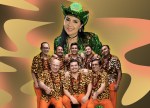
“It’s good for people to see different [cultures], especially [people] from here. They literally never heard cumbia before, so that kind of tells you like, ‘Hey man, we need to infiltrate over here,’” he says, adding that he hopes his multi-genre DJ set, which also included vallenato and trap, gave the audience a good introduction to cumbia.
“Indigenous representation and Afro-Latin representation are very important. They’re very important elements in jazz. If we look at the jazz artists throughout history, we have these influences – very strong influences in the music.”
The next day (Apr. 26), Mixanteña de Santa Cecilia, a traditional wind band from Mexico City formed in 2010, took the stage. They also agreed with Downs’ and El Dusty’s point on Mexican and jazz music’s shared elements, coming from a traditional folklore background. “We learned that Mexican music has links with the music from here, jazz, and so since we share our roots, it is always nice to collaborate with other musicians and have other musicians listen to our music and the rhythms we play,” the band’s trumpet player, Ana Meixueiro, says. Overall, sharing their traditional music is most important to them, feeling a responsibility to do so, like boleros and merequetengues from the Mexican regions of Oaxaca and Guerrero.
All three artists showed their music in a different way, yet similarly captivated the crowd. Whether or not the audience heard these Mexican genres before, what’s clear is that they had a good time experiencing them. Remezcla spoke to London-based festival attendee Tom, who randomly chose to see El Dusty perform. Though he’s never heard of cumbia before, he says that it’s “just pure vibes.” “Music [festivals] is one of the best places to listen to other cultures’ music,” he says about his experience at the Pavilion, adding that music is a key to getting to know another culture.

But the Latine stage goes further than artists garnering new fans. It’s also opening new platforms for Latines to see their favorite artists. A Mexican educator who teaches Spanish, Malinalli Echeverria Hernandez, was thrilled to see Downs perform twice on Friday (Apr. 25). The Lafayette resident says that she feels “so proud” of her culture being showcased at the festival. “We have a lot of talent in Mexico, and it is very nice that we can share a little bit of everything that represents our Mexican culture,” she tells Remezcla.
Seeing other cultures experience a bit of our culture like cumbia and tamales at the Expedia Cultural Exchange Pavilion in the same space where I’m experiencing New Orleans’ jazz and fried alligator bites, puts things in perspective. Yeah, I’m used to eating and making tamales, but the pavilion’s long line for $10 tamales made me realize that other regions may not have Mexican food that accessible to them, so I can see why that line for tamales stayed long throughout the weekend. And that’s what the Expedia Cultural Exchange Pavilion is all about — giving a taste of our rich cultures. Because while we’re used to dancing cumbia at family gatherings, others from international places like London are barely getting an introduction to the genre and adding our songs to their playlists.
Travel and accommodations were provided to the author by Expedia for the purpose of writing this story.

